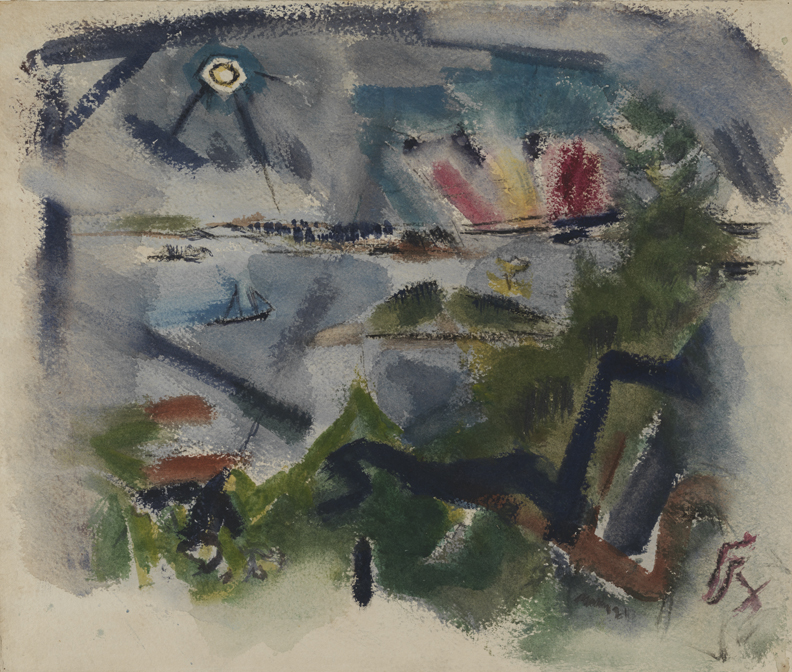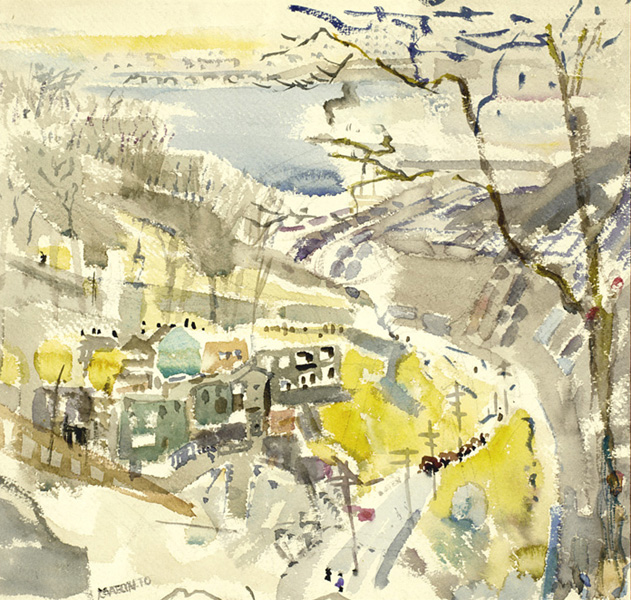
Sun, Sea, Land - Maine
John Marin
The landscape of Maine served as a basis for John Marin’s exploration of the grand forces of nature. Marin knew this rugged landscape well: in 1914 he began to spend his summers in Maine, and in the following year he bought an island there. In 1905, Marin traveled to Paris, where he may have seen large exhibitions of works by several of the Post-Impressionists. Marin may also have been aware of the popular lectures given by Henri Bergson, who promoted the notion of a “vital force” animating all of nature. Still, Marin's conversion to modernism was a cautious one. he did not fully embrace modern art until he returned to New York in 1909 and became a close associate of photographer Alfred Stieglitz, whose gallery was the country's leading showcase for the avant-garde.
The blue horizon and forest-green foreground of "Sun, Sea, Land—Maine" immediately conjure the natural world; however, the bold strokes of yellow and crimson at the horizon, as well as the angular black and green lines that lead the viewer through the foreground portray the artist’s “inner vision” of energies animating a dynamic, changing experience.
Artist
Date of Birth
(1872-1953)
Date
1921
Medium
Watercolor over charcoal on off-white wove paper
Dimensions
16 1/2 x 19 1/2 in. (41.91 x 49.53 cm.)
Accession #
1985.21
Credit Line
John S. Phillips Bequest, 1876 (By exchange: acquired from the Samuel S. White, 3rd, and Vera White Collection given to the Philadelphia Museum of Art in 1967)
Copyright
© Estate of John Marin / Artists Rights Society (ARS), New York
Category
Subject
We're so excited you're planning to visit PAFA!
Make time for art — visit us Thursday to Sunday.
Before reserving your tickets, please review helpful information about museum hours, accessibility, building access, and special admission programs.
If you have any questions, feel free to reach out to us at visitorservices@pafa.org — we’d love to help!
